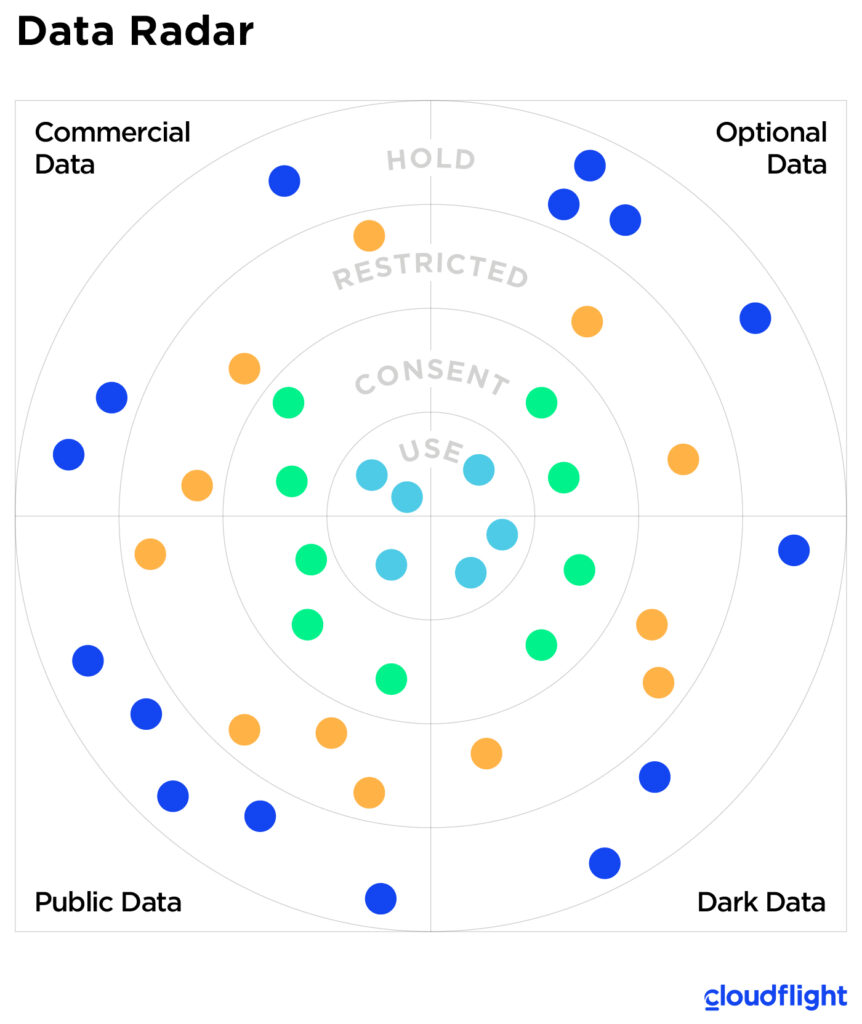In many companies, increasing efforts are being made to use Artificial Intelligence (AI) in initial Proof of Concepts (PoC) as well as in productive operation. These individual initiatives are often driven by different departments. It is not uncommon for similar – or even the same – topics to be worked on in the same company without the respective project teams knowing about each other.
In order to channel this uncontrolled growth of AI as well as to elevate it to a strategically important level within the company, it is imperative to develop an AI strategy. But which points are worth addressing when it comes to creating a comprehensive AI strategy?
In this article, you will find the essential components that, in our opinion, should be included in your strategy.
Corporate strategy
Before starting with an AI strategy, you should already have a clear company strategy. If this is a few years old, it should be readdressed and questioned so that it can be updated if necessary. This strategy forms the basis for all corporate action, including the initiatives regarding AI.
Strategically important use cases
Only when there is an up-to-date company strategy will you be able to identify and create the core goals and strategically important use cases for the implementation of AI. You should also be clear about the contribution AI makes to your company’s goals. Is it about optimizing your processes or introducing an innovative product?
In the first step, select 3–5 use cases. More are usually not useful. You need to focus on the beginning of your journey towards AI.
To select the first use cases, you can use the following points to evaluate them:
- Customer benefit
- Flagship feature
- Return on investment (ROI)
Data strategy
Without data, there is no AI. You should therefore ask yourself the following questions at this point:
- What data do we need for our use cases?
- What data do we have?
- What data sources do we have?
- Do we have the right data?
- Do we have enough data?
- What data are we missing?
- How can we obtain needed data?
- How do we store the data?
- Who needs access to the data?
You should visualize this information and your data streams. This will give you a complete overview of your data landscape.
An example of a visualization can be the radar or matrix representation.
Corporate culture and employee skills
In addition to data, people are essential to implementing AI projects.
- Do you have employees with experience in Data Science or Machine Learning?
- Do you need new roles in your organization?
- Do you need new employees?
- How can you train your existing team?
- What is the acceptance of subject matter experts from each department? (This is imperative to ensure smooth collaboration)
- Do you need expertise from outside to strengthen your team with regard to AI or to bring in additional knowledge?
A cultural change in a company will not happen overnight or with the entire workforce. This is because AI systems are often met with low acceptance in the workplace. The key is to find a part of the organization that is the quickest and most efficient but which is also large enough to start the chain reaction within the organization.
You can find a five-step approach in the article Leaders’ framework to scale AI – What it really takes to scale artificial intelligence.
Technology and infrastructure
Clearly define which technologies you want to use in your company and which ones you do not. As a rule, the technologies result from the use cases defined above. Computer vision or natural language processing are just two examples. It is also important under which conditions and prerequisites the respective technologies are used. In the case of computer vision, it may be a requirement that people who are recognized are immediately made unrecognizable so as not to violate any personal rights.
Don’t try to reinvent the wheel! Open-source frameworks as well as transfer learning based on openly available models are indispensable for efficiently developing machine learning solutions. If data processing in the cloud is possible, hyperscalers also offer a variety of services to quickly achieve the goal.
Compare the different services using a matrix in order to find the ideal solution for your use case. For example, you can evaluate the AI components according to the following aspects:
- Tasks/use case
- Scalability
- On site vs. public cloud
- Cost
- Training with individual data
- Ready-to-use services
However, there may be other issues to evaluate in your organization.
Legal and ethical issues and bias
The use of AI always raises questions about ethical and moral justifiability. This must absolutely be given when it is used. Ask yourself the following questions:
- How do we protect the privacy of individuals and their personal data?
- How do we ensure that the AI is not biased in its decisions and that it does not disfavor anyone?
- Are there any legal restrictions on our use cases?
- Do we require consent for data collection? If so, from whom exactly?
Avoid bias in AI from biased data or from unconscious societal biases influencing it (or its selection)
Implementation
Before you start with the implementation, you should fully analyze the status quo in your company or summarize and evaluate it from the previous topic blocks:
- What AI projects and initiatives are already underway?
- What data is available and in what form?
- Do we have qualified employees?
- Have we mastered the required technologies?
You should then match the status quo with your vision in order to obtain a clear picture of what you are missing on the way to achieving your target (gap analysis).
In order to close these gaps, you must plan the corresponding actions in your roadmap. The roadmap is supplemented with the first use cases and the rough planning of these.
Managing change
No matter how good the implementation plan is, it will fail if your employees do not understand the overall goal. It is therefore essential to take all employees with you on the journey and not only those who are directly affected. Proactive communication is also needed for those who are not affected (for now). Fears, concerns, and reservations regarding moral issues and possible job losses, in particular, should be taken into account and discussed in advance.
Proactive communication must also be made in the direction of the client (usually the management or the supervisory board). Are expectations clearly communicated and realistic goals clearly described? Experience shows that top management often expects rapid success, which can only rarely be achieved with AI initiatives. As a rule, these projects take longer than expected because in many companies, basic work must be done in the sense of the points addressed here. In addition, an AI system that deeply intervenes in the company’s processes is less about software procurement and much more about reflecting and learning about one’s own company.
Bottom line
We at Cloudflight are friends of the agile way of working as well as for strategic topics. That is, you start with the strategic considerations and develop 1–2 PoCs in parallel.
This can be used to prove or disprove the hypotheses of the strategy development. Furthermore, quick wins are important to attract stakeholders and minimize risks.
Only the combination of fast and scalable PoCs and a clear overarching strategy will bring lasting success to your AI initiatives.

